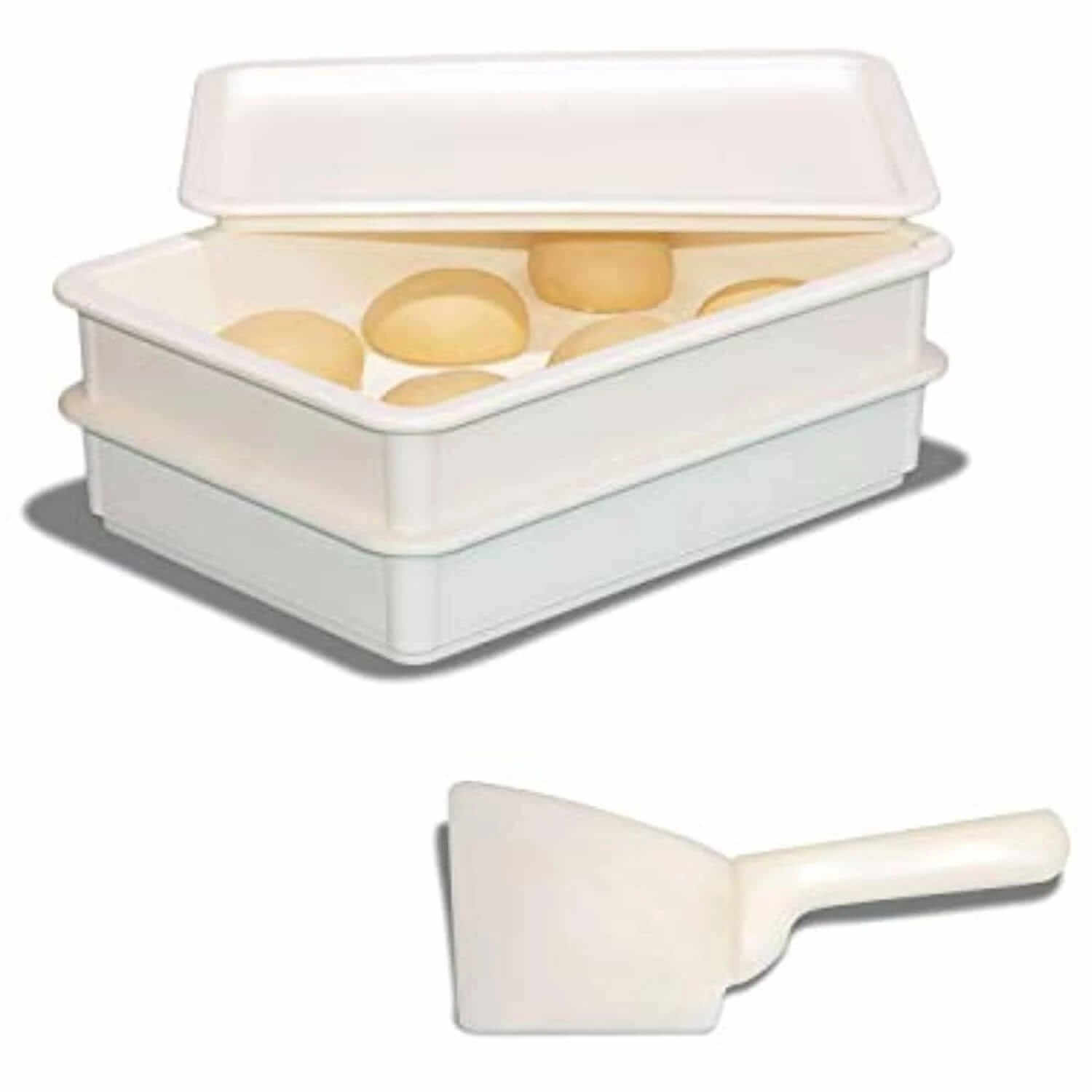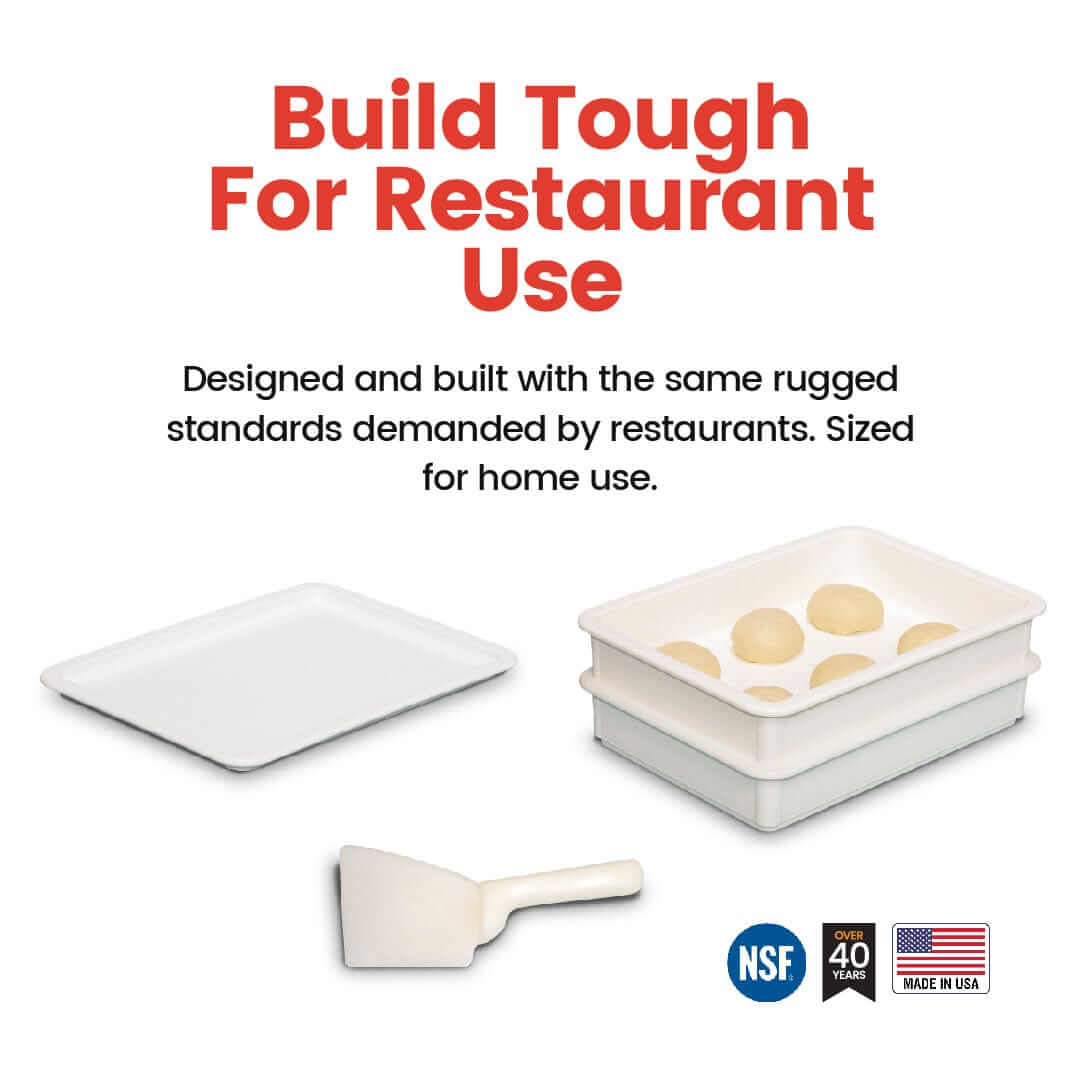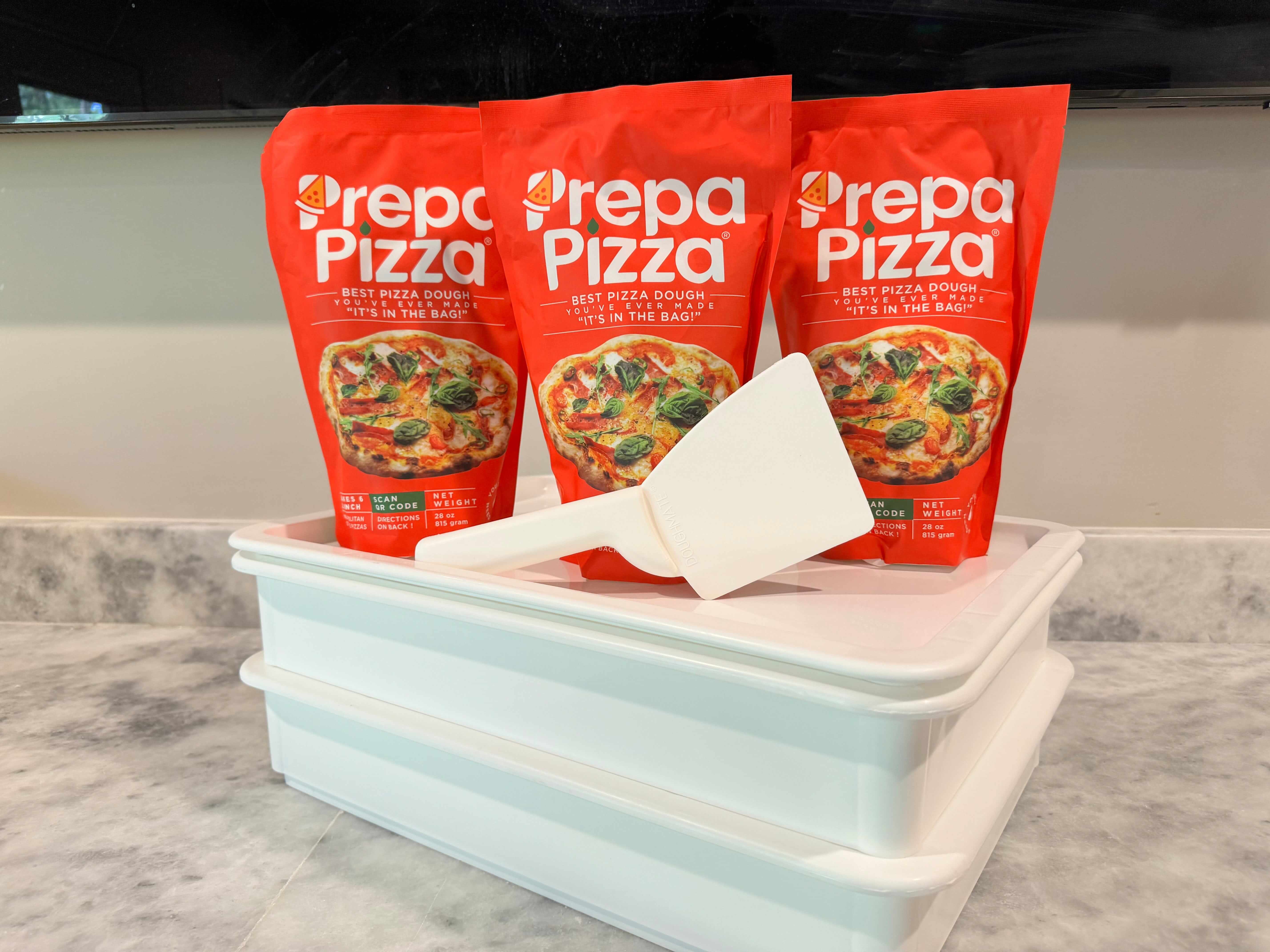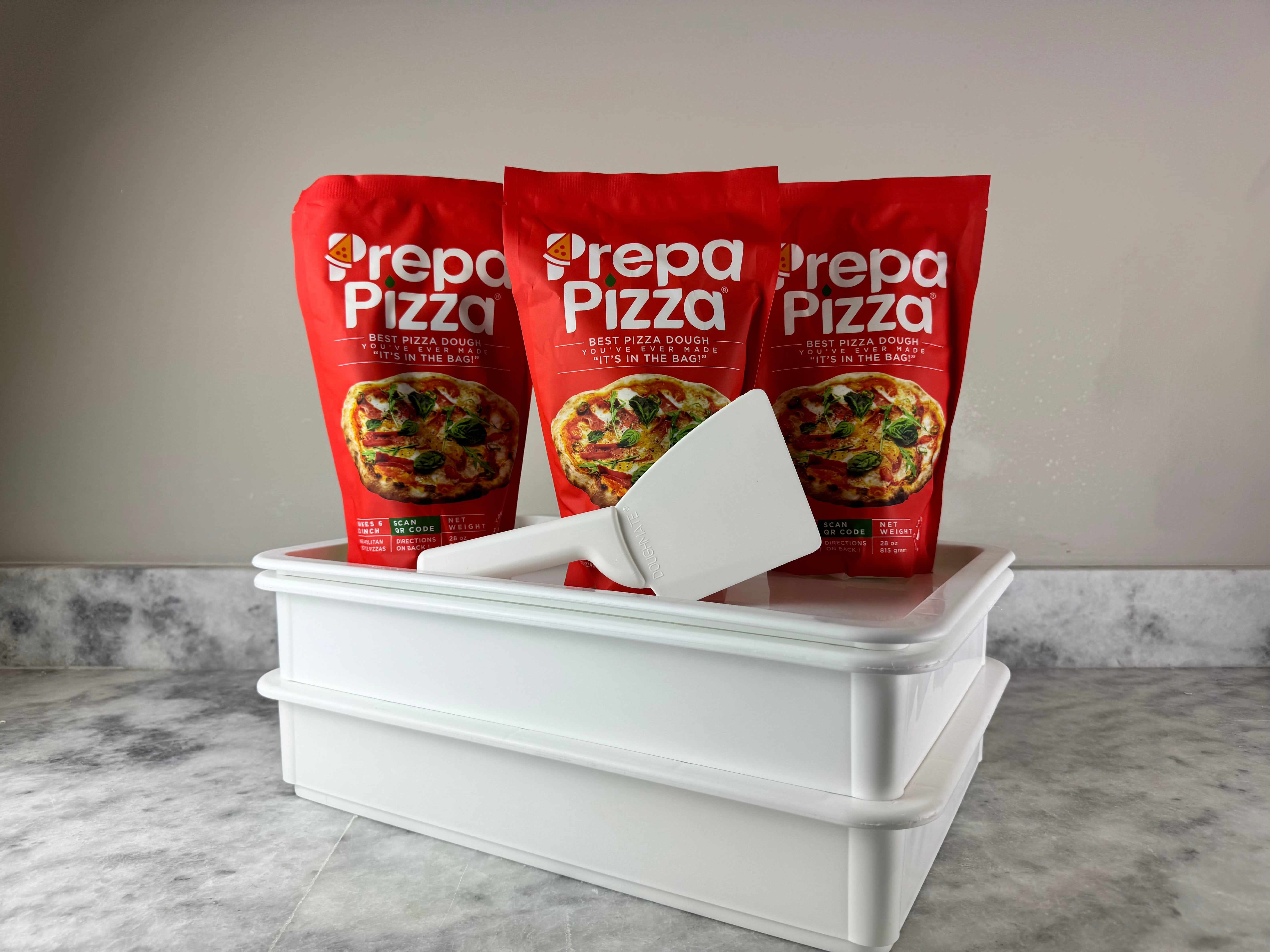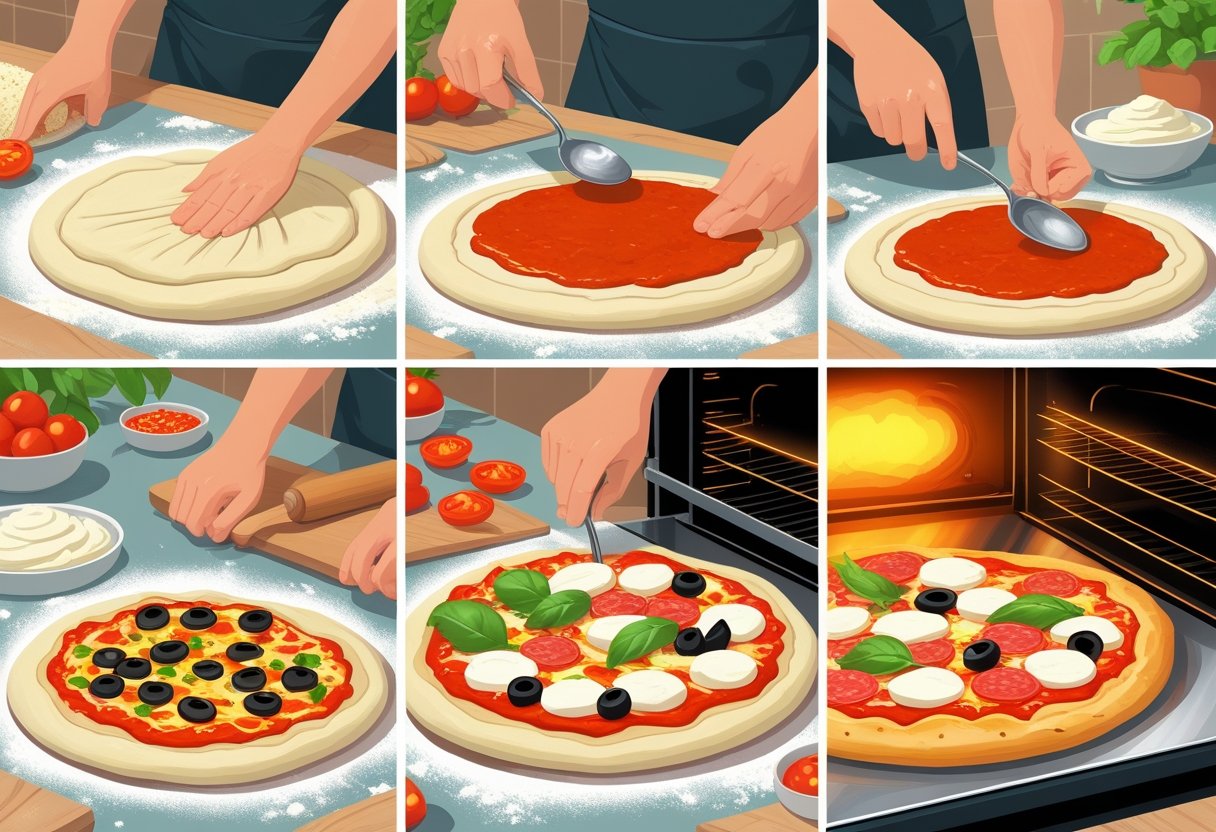
How to Bake Pizza Dough with Toppings: Step-by-Step Guide for Perfect Results
Baking pizza dough with toppings at home is simpler than you might think, especially when you start with a high-quality premade dough like Prepa Pizza’s. Using their restaurant-quality dough saves you time and ensures a reliable base that bakes evenly every time. You can focus on layering your favorite ingredients without worrying about whether the crust will turn out right. Check out the Prepa Pizza dough kit to get started quickly and easily.
The key to baking pizza dough with toppings is to prepare your dough properly, add your sauce, cheese, and toppings evenly, and then bake in a hot oven until the crust is golden and the cheese melts perfectly. By following this process, you’ll achieve a crispy yet tender crust that holds all your toppings without becoming soggy. This approach lets you customize your homemade pizza exactly to your taste, making the baking process enjoyable and rewarding.
Preparing the Pizza Dough
To get your pizza dough ready for toppings, proper ingredient choices, mixing techniques, and resting times are essential. These steps influence the dough’s texture, flavor, and how well it holds up under toppings. Using high-quality dough like Prepa Pizza’s premade dough simplifies the process while delivering consistent results. You can explore their premium dough options here.
Whether you start from scratch or use Prepa Pizza’s restaurant-quality premade dough, understanding the basics helps you improve every pizza you bake.
Selecting Flour and Ingredients
Your dough’s texture and flavor begin with flour selection. All-purpose flour works fine but pizza flour (often called “00” flour) is preferred for its fine grind and higher protein content, producing a crisp exterior and tender inside.
Use quality ingredients like filtered water, fine sea salt, and a good olive oil to improve dough elasticity and flavor. Olive oil also helps prevent sticking and adds subtle richness.
If you’re using Prepa Pizza’s premade dough, rest assured it includes premium-grade flour and ingredients, matching what professional kitchens use for consistent quality every time.
Mixing and Kneading Techniques
Mix flour, water, yeast, salt, and olive oil until just combined. Knead the dough on a lightly floured surface for 8 to 10 minutes by hand or about 5 minutes with a stand mixer.
Kneading develops gluten, which is critical for dough flexibility and structure. You want a smooth, slightly tacky dough that springs back when pressed.
Avoid over-flouring during kneading to retain moisture and a softer crumb. With Prepa Pizza’s premade dough, this step is largely done, reducing preparation time.
Proofing and Resting for Optimal Texture
Proofing is letting the dough rise to develop flavor and texture. After kneading, place the dough in an oiled bowl, cover it, and let it rest in a warm spot for 1 to 2 hours or until doubled in size.
This resting allows yeast to create gas bubbles, yielding a light, airy crust. After the first rise, gently deflate the dough and shape it.
A second short rest (10-20 minutes) after shaping helps the dough relax, making it easier to stretch without shrinking.
Using Prepa Pizza’s premade dough, proofing may be shorter or skipped depending on storage instructions, but allowing the dough to warm slightly first always improves pliability.
Shaping and Handling the Crust
Handling pizza dough properly sets the foundation for a great crust. You need to stretch the dough evenly, avoid tearing or shrinkage, and shape it to bake up with the desired texture. Using quality premade dough like Prepa Pizza’s Prepa Pizza Dough Kit will help you achieve consistent results with less effort.
Pay attention to how you shape and handle the dough; this impacts final thickness, crust chewiness, and the overall bake. Preparing your surface with cornmeal or flour also aids in easy handling and a crisp bottom crust.
Stretching and Forming the Dough
Start by letting your dough rest at room temperature for 30 minutes to relax the gluten. This makes stretching easier and reduces tearing. Avoid using a rolling pin, which can compress the dough and reduce airiness.
Use your hands to gently press the dough from the center outward while rotating it. Let gravity assist by lifting and draping the dough over your fists to stretch it evenly. Aim for a uniform thickness without holes.
If using Prepa Pizza’s premade dough, you'll find it already well-fermented for easy handling and ideal elasticity. Sprinkle cornmeal on your work surface to prevent sticking and add a subtle crunch to the crust bottom.
Preventing Shrinking and Tearing
Dough shrinks because gluten is tight or cold. To prevent this, keep the dough at room temperature before shaping and avoid overstretching thin areas.
If the dough resists stretching and snaps back, let it rest briefly for 5-10 minutes, then try again gently. Repair any tears by pinching the edges or pressing torn parts together carefully.
Using high-quality dough like Prepa Pizza’s ensures good gluten development and elasticity, minimizing unwanted shrinking and tearing during shaping. Handle the dough softly, and avoid pulling it by force, which weakens the structure.
Creating the Perfect Pizza Crust
For a crisp crust with a chewy interior, shape your dough slightly thicker at the edges to form a collar or rim. This traps air and moisture, giving a light but firm crust.
Pre-dusting your baking surface or pizza peel with cornmeal improves transfer and adds extra texture to the crust. Bake on a preheated stone or steel to mimic professional ovens, ensuring even heat and a well-browned bottom.
With Prepa Pizza dough, you get a balance of hydration and ingredients tailored for an ideal crust every time. Shape it carefully, add your toppings, and bake promptly for the best results.
Choosing and Applying Pizza Toppings
Selecting the right toppings and applying them properly is crucial to baking a great pizza with Prepa Pizza’s premium premade dough. Your choice of sauce, cheese, meats, and vegetables affects texture, flavor, and overall bake quality. Proper layering helps avoid soggy crusts and uneven cooking.
Layering Sauce and Cheese
Start with an even spread of pizza sauce on your Prepa Pizza premade dough to create a solid flavor base. Use just enough sauce to cover the dough without soaking it, maintaining a balance to avoid sogginess.
Next, add cheese. Mozzarella, especially fresh mozzarella, melts beautifully and provides creamy texture. You can sprinkle shredded mozzarella evenly or place slices of fresh mozzarella with some space. Add a light dusting of parmesan cheese for a sharper bite and to enhance browning during baking.
Applying the cheese over the sauce acts as a moisture barrier, preventing toppings from making the dough wet. This order supports a crispy crust and a balanced melt.
Selecting and Preparing Meats
Choose meats like pepperoni, sausage, or prosciutto based on flavor and cooking time. Thinly sliced pepperoni crisps nicely on top, releasing oil that enhances flavor and texture.
Precook sausage before adding it to ensure it is fully cooked, reducing the risk of underdone bits after baking. Prosciutto should be added near the end of the baking process or after to retain its delicate texture and reduce crisping.
Arrange meats in thin layers so heat circulates well, preventing uneven cooking. Avoid overcrowding, which can trap moisture and cause sogginess.
Roasting and Adding Vegetables
Vegetables like mushrooms and onions contain water and can release moisture that affects the crust. Lightly roasting these beforehand evaporates excess water and intensifies their flavor.
Once roasted, spread vegetables over the cheese layer. This placement allows enough heat exposure for caramelization without making the crust soggy.
For best results, slice vegetables thin to help them cook evenly. Avoid piling them too thickly, as this can weigh down the pizza and affect baking time.
Using Prepa Pizza’s premade dough along with these topping techniques helps you control moisture and heat, ensuring your pizza bakes evenly with crisp crust and well-balanced flavors.
You can find premium quality dough for your pizza-making needs at Prepa Pizza’s dough kit product page.
Baking Techniques for Pizza With Toppings
To bake pizza dough with toppings successfully, you need precise control over oven settings and equipment. Proper heat distribution and handling tools make a difference in achieving a crisp crust and evenly cooked toppings. Using quality premade dough, like Prepa Pizza’s, helps you focus on baking techniques without worrying about dough preparation.
You’ll want to prepare your oven carefully, select the right baking surface, and learn how to move your pizza efficiently to and from the oven. These factors work together to enhance texture and flavor.
Oven Preparation and Temperature Control
Preheat your oven thoroughly to a high temperature, typically between 475°F and 500°F. This ensures the pizza cooks quickly and crisps up properly. Place your pizza stone or baking steel in the oven before preheating to allow it to reach an even, consistent temperature.
Avoid opening the oven door frequently during baking, as this causes heat loss and extends cooking time. Using a convection setting, if available, can help circulate hot air evenly for balanced baking.
Prepa Pizza’s premade dough bakes best when the oven and baking surface are at full heat, so allow at least 30-45 minutes for preheating, depending on your equipment. Monitor the pizza closely, as baking times range from 7 to 12 minutes depending on your topping load and dough thickness.
Using Baking Stones, Steels, and Sheets
Baking stones and steels retain and radiate heat, which helps develop a crisp, golden crust. Stones tend to absorb moisture from the dough, producing a drier surface crispness, while steels offer higher thermal conductivity for faster browning.
If using a baking sheet, lightly dust it with cornmeal or semolina to prevent sticking and mimic the texture provided by stones. Baking sheets heat less evenly, so you may notice softer bottoms compared to stones or steels unless you par-bake your dough first.
For best results with Prepa Pizza dough, use a preheated baking stone or steel placed on the oven’s middle rack. This placement balances top and bottom heat, ensuring toppings cook evenly while the crust crisps properly.
Transferring Pizza With a Peel
A pizza peel is essential for safely sliding your pizza onto and off of a hot stone or baking surface. To prevent sticking, dust the peel liberally with flour, cornmeal, or semolina before placing your prepared dough and toppings on it.
Work quickly after assembling the pizza to avoid moisture dampening the flour base. Use a gentle, firm forward and backward motion to transfer the pizza smoothly onto the baking stone or steel.
Once baking is complete, use the peel to remove the pizza carefully, supporting the entire crust to prevent toppings from sliding off. A wooden peel is good for assembling and launching pizza, while a metal peel is often better for retrieval due to its thinner edge.
For your best baking experience, pair Prepa Pizza’s high-quality premade dough with these handling and baking methods. This ensures consistent results with every pizza you make.
Finishing and Serving Your Pizza
Using Prepa Pizza’s premade dough, you have a strong foundation for a quality pizza. This dough is made with premium, restaurant-quality ingredients, ensuring consistent results every time you bake. Once your pizza is topped and in the oven, the final steps focus on perfecting the crust, resting the pie, and enhancing its flavors before serving.
Checking Bake and Achieving Crust Perfection
Your pizza’s doneness is evident by the crust color and cheese melt. Look for a golden-brown crust with slight crisp edges and fully melted, slightly bubbling cheese. Baking times vary but typically range from 7-12 minutes at high heat.
If you used Prepa Pizza’s premade dough and par-baked it, ensure the second bake allows the cheese to melt while the crust crisps without burning. Rotate the pizza halfway through baking to cook evenly.
For an ideal crust, avoid soggy spots by limiting overly wet toppings and spreading sauce thinly. The right layering and proper oven temperature help the dough develop a crisp exterior and chewy interior.
Resting and Slicing Strategies
After removing your pizza from the oven, rest it for about 3-5 minutes on a cooling rack or cutting board. This resting time lets the cheese set and prevents toppings from sliding off when you slice.
Use a sharp pizza cutter or a large chef’s knife to cut clean slices. Hold the pizza steady with one hand while applying firm, even pressure.
Cutting into the pizza too soon can cause the cheese to pull and toppings to shift. Resting also cools the pizza slightly, making it easier to serve and eat without burning your mouth.
Enhancing Flavor After Baking
You can elevate your pizza by adding fresh ingredients after baking. Common finishing touches include drizzling olive oil, sprinkling fresh herbs like basil or oregano, and adding greens such as arugula or spinach.
Other options include a light sprinkle of grated Parmesan, chili flakes, or a drizzle of balsamic glaze. These toppings add freshness and complexity without making the crust soggy.
Finishing touches personalize your pizza and balance flavors, especially when you start with well-made dough from Prepa Pizza, which handles toppings and oils without losing texture.
For best results, add these final ingredients just before serving to maintain their brightness and texture.
Explore Prepa Pizza’s premium dough kits available at their product page to ensure your pizza starts with a restaurant-quality base.
Frequently Asked Questions
Using high-quality premade dough, like the one from Prepa Pizza, helps you achieve consistent results when baking pizza at home. Their dough kit, made with premium ingredients, simplifies preparation and gives you a restaurant-quality base every time. You’ll save time and get a great crust ready for your favorite toppings.
Baking times and temperatures vary depending on whether you prebake the dough or cook it fully topped. Knowing when and how to add toppings, plus whether you need yeast in your dough, can improve your pizza’s texture and flavor.
What temperature should pizza dough be cooked at for optimal results?
Bake your pizza at about 450°F (232°C) for a crispy crust and even cooking. Higher temperatures work well for shorter baking times, especially if using a pizza stone or steel. Prepa Pizza dough is designed to handle these temperatures for best texture and flavor.
How long does it take to cook store-bought pizza dough in the oven?
Cooking time generally ranges from 10 to 15 minutes at 450°F. If you use Prepa Pizza’s premade dough, expect about 12 minutes once toppings are added, depending on thickness and oven type. Monitor the crust color and cheese melt for perfect doneness.
Is pre-baking pizza crust necessary before adding toppings, and if so, for how long?
Pre-baking is optional but recommended if you want to avoid soggy crusts, especially with heavy or wet toppings. Par-baking the dough for 5–8 minutes until set but not browned helps. After that, add toppings and bake fully to finish.
At what point during the baking process should you add toppings to pizza dough?
If you choose to par-bake, add toppings after the crust has cooled slightly post-prebake. Otherwise, assemble all toppings on raw dough and bake everything together. The method depends on your preferred crust texture and toppings moisture.
What are the steps to make pizza dough from scratch?
You combine flour, water, yeast, salt, and oil, then knead to develop gluten. Let the dough rise until it doubles, usually at least 1 hour at room temperature or overnight refrigerated. Roll it out, add toppings, and bake. Using Prepa Pizza premade dough skips these steps for convenience.
Can you bake pizza dough with toppings without yeast, and what are the adjustments?
Yes, but non-yeast doughs don’t rise and tend to be denser. Use baking powder or soda as leavening agents. Adjust hydration and expect a different texture. Prepa Pizza’s yeast-leavened premade dough ensures a light, airy crust without extra work.




